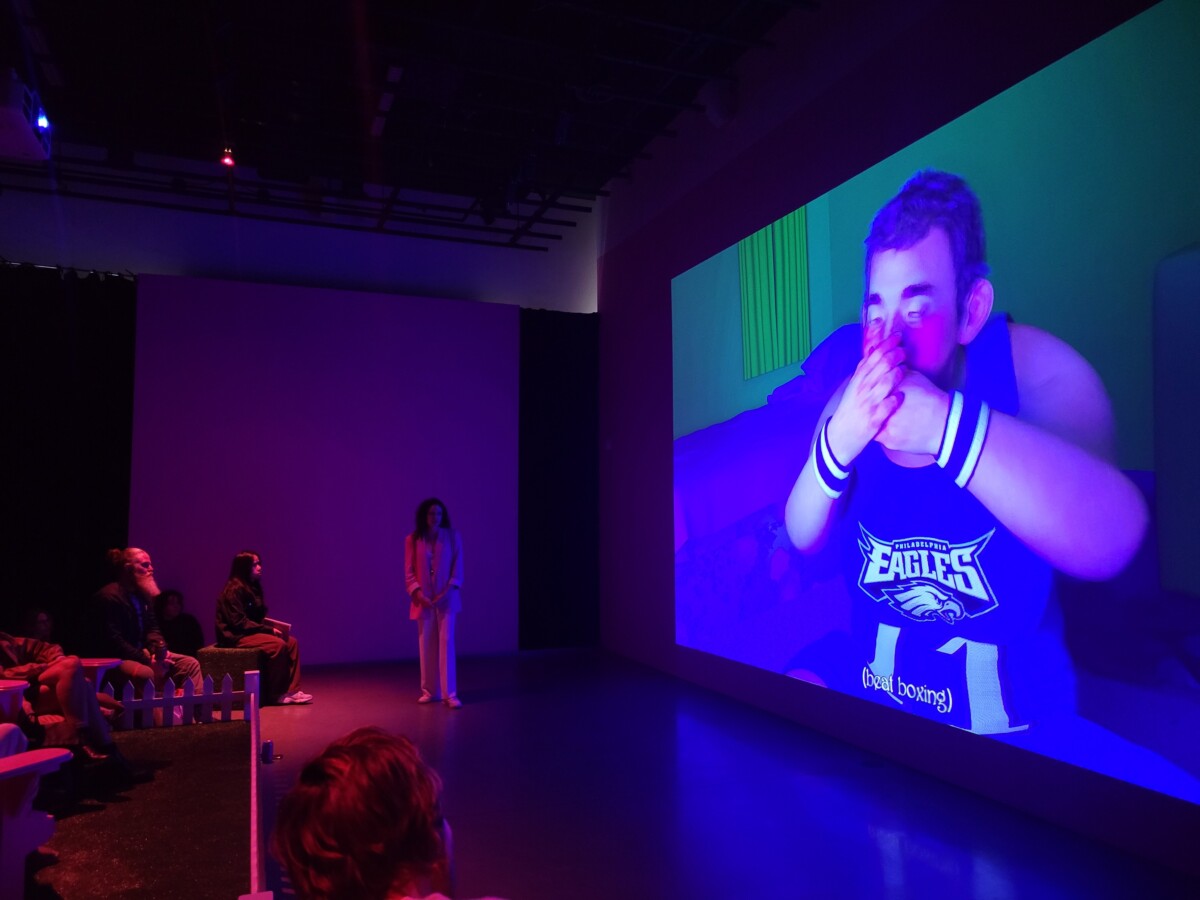Birds or humans? Eagle blurs the lines with “Pretty Talk.”
Concordia’s FOFA (Faculty of Fine Arts) Gallery has been echoing with all sorts of unsettling sounds this past week. Not to be alarmed, it has simply been hosting Mara Eagle’s “Pretty Talk” exhibition.
Eagle, an American artist, has designed a unique audiovisual experience for her audience. Stepping into the FOFA Gallery, it is impossible to ignore the strange yet familiar sounds that pierce the heavy black curtain separating the exhibition room from the receptionist’s office. Behind the curtain, an incongruous setting is revealed: in the middle of a dimly lit room surrounded by a white picket fence, the only furnishings are two white Adirondack chairs placed on a faux grass tile.
On the wall facing the chairs, a 15-minute 3D animation—rendered in a disturbing, uncanny-valley-like style—is projected on a loop. On the opposite wall, a descriptive sheet indicates that the soundtrack—which sharpens once the viewer enters the space and reveals all manner of human noises such as farts, baby cries, laughter, screams and more—is in fact made up of bird mimicry.
In the short animated film, increasingly repulsive characters appear in turn, such as a huge infant with facial and torso hair and a grandfather with shark-like teeth. They are merely pale imitations of human beings: their jerky movements, misshapen and offbeat facial expressions, grotesquely proportioned bodies, and lifeless eyes all betray their artificiality and send chills down the spine.
The soundtrack is composed of hundreds of fragments of mimicked human sounds, which combined to the visuals make for a rather horrifying experience. The superimposition of the muffled and high-pitched bird mimicry noises creates a cacophony that sounds alien.
The 3D animation and accompanying soundtrack are played in a loop until the gallery closes, allowing viewers to watch the whole thing as many times as they need to absorb the work’s weirdness. Afterwards, the audience can watch a seven-minute video about the artist’s creative process in a more intimate screening room toward the exit.
On the screen, Eagle explains that she created the soundtrack first and foremost. The visuals were thereafter created to fit the sounds and were animated by her collaborator Calum MacConnell. Eagle explains that she spent a long while researching and collecting hundreds of hyper-realistic bird mimicry sound samples on the internet using YouTube and other platforms, for she wanted her project to be very low budget and DIY. She then collaged and organized all the bird sound samples, which ended up making a 15-minute soundtrack. She was inspired to make her project into a loop because of how repetitive bird speech tends to be.
The bizarre, interesting and complete experience of “Pretty Talk” is not only enthralling, but it also serves a good cause. Eagle is working in collaboration with a Quebec-based organization called Perroquetsecours to raise funds towards rehoming birds that are in need of adoption. Her tote bags are for sale at the FOFA gallery for $25 and all of the proceeds will be donated to this cause.
